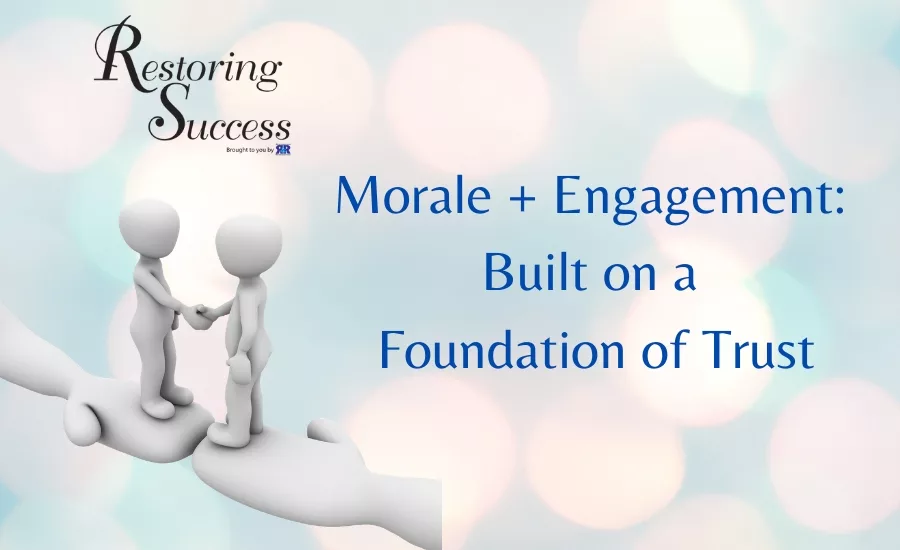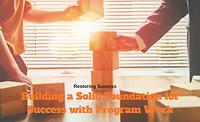Restoring Success
Morale and Engagement: Built on a Foundation of Trust

It is difficult to challenge the notion that good employee morale and strong engagement is important in our industry. In fact, being “happy” may be critical to our customer service. We spend much of our time at work, have 24/7 on-call rotations, and serve people who have experienced disaster, so why not do it with joy? In Is Your Organization Happy?, you will find some considerations and tips about creating a “happy” environment.
Morale and engagement are complex and have many contributing factors. Procedures, best practices, training, etc. will have limited value to your company if the individuals and team lack positive morale and are not engaged. Although there is much we can do in our day to day for Employee Morale Year Round, consider the notion that morale and engagement are built on a foundation of trust.
Trust is a big word that has many elements, synonyms, and influences in variety of aspects of our organizations and lives. At times, there may be relationships within the organization that have voids of trust. If trust issues become widespread and unresolved or there becomes a feeling of distrust towards the organization itself, it will be challenging to successfully employ any morale building and engagement initiatives.
Imagine for a moment...
- You are with group of people you trust and are working together, collaborating, getting things done; you probably feel good and happy. If one of these people gives you a cookie and a note thanking you for a great job, it would make you feel good, happy, and encourage you to continue to contribute to objectives or the purpose.
- You are with a group of people you do not trust. The mistrust could stem from a variety of reasons, behaviors, and experiences with the people in the group and/or you may not even be clear on what is causing the mistrust; it is possibly just a feeling. If one of these people give you a cookie and note thanking you for a great job, may feel like there is an alternative motive, suspicious, and may not even want to eat the cookie!
Same gesture, same note, but different impact based on trust.
A culture filled with fear and mistrust will be a culture with a disengaged and unhappy team. Feelings of fear and mistrust could be a great motivator when perhaps running from an angry bear but imagine going to work everyday feeling this way.
Start with reading "Speed of Trust" by Stephen MR Covey. If you are pressed for time and want to fast track your organization and team, watch the video: The Speed of Trust - Stephen M.R Covey @LEAD Presented by HR.com. You will gain the ability to understand, articulate, evaluate, and build trust within your organization. He presents what he refers to as three big ideas:
Trust is an Economic Driver
Trust is the #1 Competency of Leadership
Trust is a Learnable Competency
Where does it all begin? According to Covey, it starts with the leadership.
#1 Job of Leaders
Inspire Trust
Give Trust
In building morale and engagement in your company, start with the foundation, trust. A person who is expected to engage in the mission, values, and goals of an organization needs to trust the organization and the leadership. As Covey breaks down the elements of trust, he lists the following “behaviors”:
1. Talk Straight
2. Demonstrate Respect
3. Create Transparency
4. Right Wrongs
5. Show Loyalty
6. Deliver Results
7. Get Better
8. Confront Reality
9. Clarify Expectation
10. Practice Accountability
11. Listen First
12. Keep Commitments
13. Extend Trust
These behaviors are a great place to start if evaluating or building your foundation of a happy, healthy, and productive work environment. The men and women in our restoration companies are the most valuable and important assets. They deserve to feel good and happy at work.
Share topics and ideas that you would like to read in future Restoring Success editions.
Happy Restoring Success.
Looking for a reprint of this article?
From high-res PDFs to custom plaques, order your copy today!








